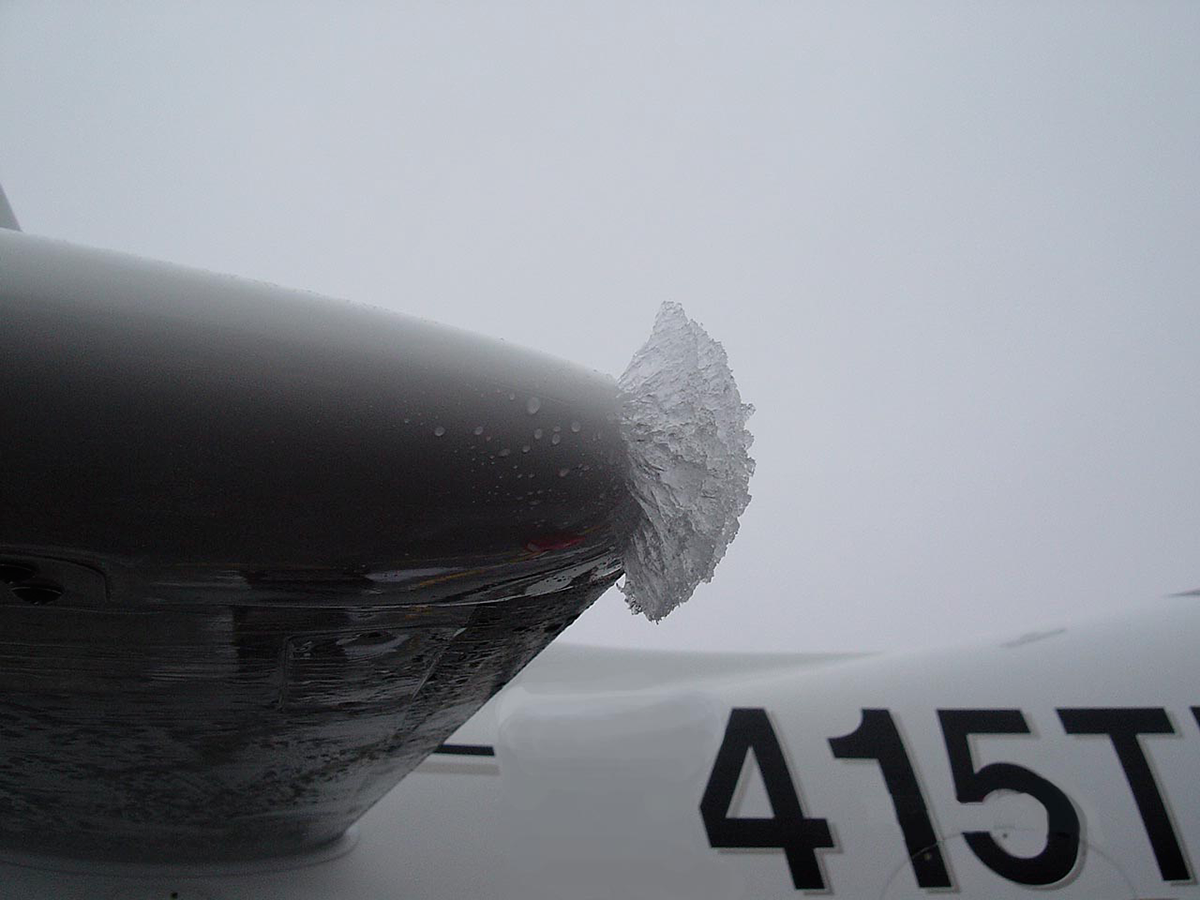
Tail ice NASA
Whether your airplane is approved for flight in known icing conditions or not, there are a number of common-sense strategies you can put into practice to minimize your risks of ice-related hazards.
First, never take off with any amount of ice, snow or frost on your airplane. If you do, you're a test pilot flying an aerodynamically unproven aircraft. Contamination as thin as 80-grit sandpaper can cause a 25 percent loss of lift.
Next, determine where the freezing level is and try to stay several thousand feet below or above it, or clear of clouds.
At the first sign of ice, do something. Climbing is often your best bet since you might not be able to regain altitude if you descend. Better yet is to make a gentle 180-degree turn and retreat.
If you must climb or descend through icing levels, do so as quickly as possible. Consider delaying your descent into icing conditions until you're as close to your destination as possible.
Don't let ATC put you in a dangerous situation. Tell them you need priority and don't be afraid to exercise your emergency authority to do whatever you need to do to stay safe.
Also keep in mind that fuel consumption increases dramatically as more power is needed to keep an ice-laden airplane aloft.
If you're loaded up with ice, find a long runway and keep your speed up all the way to the surface. Don't use flaps, which can lead to a sudden tailplane stall.
Finally, be prepared for poor braking action if the runway is covered with ice, snow, slush or water.
For more icing survival tips, pick up a copy of the January issue of Flying.

Sign-up for newsletters & special offers!
Get the latest FLYING stories & special offers delivered directly to your inbox






